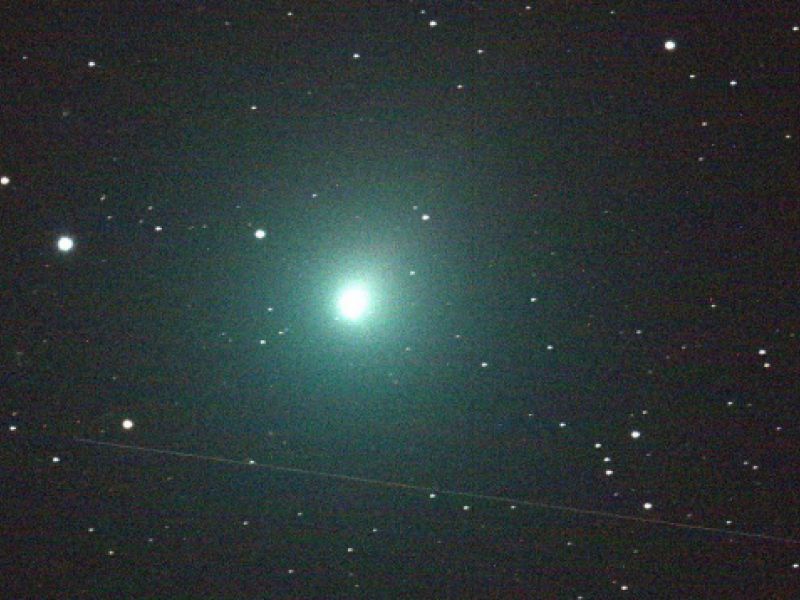January 16, 2023 – 04:00
The visitor, which frequents the skies of planet Earth every 50,000 years, had its closest point to the sun on January 12, and from the beginning of February it will be visible in the southern hemisphere. This is Comet C/2022 E3.
The comet was discovered by the Zwicky Transient Facility (ZTF) in March 2022 as it passed through the orbit of Jupiter. The observation was made using the Samuel Oschin Telescope at the Palomar Observatory in California (USA).
According to the National Observatory, the closest point of approach of this “relatively small” comet – about a kilometer in diameter – to Earth will be on February 1.
Comets are bodies consisting mostly of frozen gases, rocks, and dust, and they become clearer as they approach the sun, and their ice turns into gas, forming a cloud around them.
The last time C/2022 E3 appeared, Earth was still inhabited by Neanderthals, astronomer Felipe Montero said, based on the orbital period of this celestial body thought to have originated from the Oort Cloud – one of the most distant regions in our region. Solar System.
Some predictions indicate that the comet’s orbit is so eccentric that it no longer orbits the sun. “If that is the case, he will not return and will simply continue to leave,” the National Observatory said in a statement.
How to monitor
The observing facility will begin in the early days of February, “with better observing height than February 4th northward and under the Capella star,” Monteiro explains.
As the days go by, the comet will appear higher in the sky with increasing viewing time. At its closest approach, the celestial body will be about 42 million km from Earth.
A comet can only be seen with the naked eye if sky conditions are very favorable, i.e. with a dark sky, no moon, and no light pollution. This may be the first comet of the year seen with the naked eye, and the first after Comet Neues, which appeared in 2020.
“To observe a comet, the most reasonable thing is to use binoculars, which will make it easier to observe this bright visitor. In addition, it is important to emphasize that it is not easy to find a comet in the sky. Therefore, in addition to instruments (binoculars, telescopes, cameras), It’s interesting for people to look for a place away from urban centers, thus avoiding light pollution. To make it easier to observe the comet, the best thing you can do is look for the comet when the moon is not in the sky,” explains Montero.
For novice observers, he suggests, the ideal date is February 10, between 7 p.m. and 9 p.m., when the comet finds itself very close to Mars.
“One strategy that can be used by novice photographers as well as casual photographers is to try to photograph the comet by pointing the camera at its approximate location in the sky and taking long exposure shots of 20 to 30 seconds,” he said.
“When viewing the images, you will most likely notice a fuzzy object with a tail. With this technique, many have been able to photograph the comet even if they did not see it in the sky.
for every EBC

“Friendly zombie fanatic. Analyst. Coffee buff. Professional music specialist. Communicator.”
.jpg?v=1673861814)
